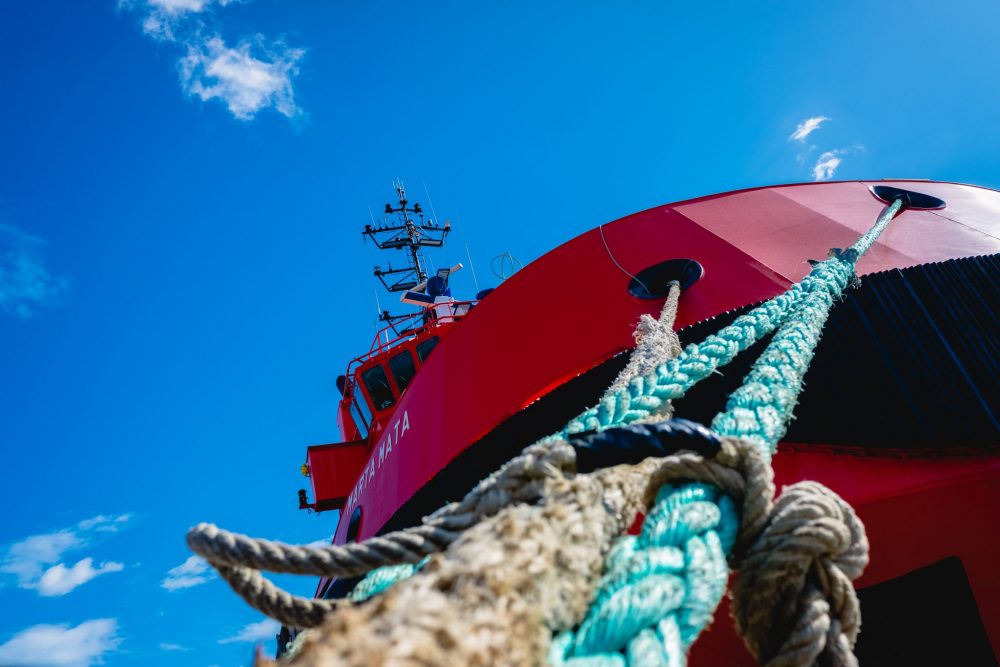Any keen boaters will know all too well the challenges faced out at sea — from blustery winds and seasickness-inducing waves to biting cold temperatures and rain that comes at you from all directions.
The seemingly safe shelter of harbours is not immune from these challenges either. In exposed harbour locations, such as those off the coast of Scotland, mooring can be especially taxing for even the most experienced boaters.
In rough conditions, you’ll see yachts attached to exposed moorings pitching and yawing uncomfortably in the waves. And if you are lucky enough to find a free mooring tucked away in a quiet corner of the harbour, picking it up can still be somewhat testing — even if you’ve tried it hundreds of times before.
Mooring isn’t just a problem for larger vessels or inexperienced boaters. Even for people who have been in and around boats all their life — or those sailing smaller boats which are not particularly high off the water — it’s, unfortunately, not always as simple as just putting the rope through the eye.
How many times have you carried out the perfect approach — stopping with the buoy precisely under your feet — only to then see the bow starting to blow off away from the mooring?
Or have you ever hooked the ring of the buoy with the boat hook, only for it to slip out of your hands as the boat lurches suddenly to the other side?
Perhaps you’ve successfully managed to recover the mooring and drag the ‘junk’ aboard (after hanging precariously over the side of the boat). However, if this has been lying in the water for some time, chances are it will be covered in seaweed, slime and other marine growth — making it unpleasant to handle and messy on deck.
If any of this sounds familiar, you’ll be all too aware of the trials and tribulations associated with mooring a boat.
Although watching this spectacle of nautical gymnastics might be a great source of amusement for other people on board or nearby boats, the reality is that it can be incredibly dangerous — not to mention exhausting.
Surely there must be a better and safer way?
The Mara Buoy solution
Imagine how much safer, simpler and more reliable it would be if users could pick up the rope by hand and moor straight onto the line coming out the top of the buoy.
This way of thinking is precisely what led to Scottish buoy specialist Mara EFS developing its revolutionary deck-level mooring system. Frustrated with existing designs, engineer George Smith re-designed the traditional buoy from the chain up — creating a new design which offers improvement in terms of safety, ease of use and night-time visibility.
Thanks to a central galvanised column that extends vertically above the waterline, the mooring line pick-up point of the Mara Buoy sits at deck level and the line ‘gives’ upon pick up — allowing the deckhand time to make fast.
Inside the column, the bottom of the mooring line is shackled directly to the riser chain and the other end is fed through the top aperture, which is rubberised to protect boats from scuffs. Reflective surfaces then help to improve night-time visibility and close-quarters navigation.
There are four original versions of the Mara Buoy. The two dynamic buoys include a small weight on the mooring line, which retracts inside the column to leave just the mooring eye on the end of the rope ready for pick up. The 15:150 D is taller, whereas the
15:100 D is shorter and more suitable for smaller vessels.
In comparison, the 10:100 S and 15:100 S both have a static mooring line with a set length of rope which hangs above water level and is more suitable for commercial applications due to having fewer moving parts.
The new, entry-level 10:75 S is then more suitable for medium to smaller-sized vessels. With all the models, the working end of the line remains well above the water and free of any slime, whilst also making the boat hook redundant.
As well as improving safety and ease of use, the Mara buoy is a very cost-effective way to maximise the use of the boat on a mooring, helping boaters to save money on Marina berth costs.
Earlier this year, Hydrosphere supplied a Mara Buoy 15:150 D to North West Marine — a marine installation and maintenance company based in Oban, which services a large percentage of boat moorings off the west coast of Scotland. The buoy is currently deployed in Dunstaffnage Marina just outside of Oban. To find out more about the Mara Buoy, please contact sales@hydrosphere.co.uk.








